Lancement : Menu [Analyse] > [Test/Caractérisation de CCD] > [Rendement quantique]
Cette fonction n'est pas accessible depuis la version light. Afin de pouvoir l'utiliser, il est nécessaire d'obtenir une clé "version complète" pour le logiciel.
But : Mesurer le rendement quantique de son CCD.
This is a really difficult measurement, because
the result has to be provided in absolute figures, and you MUST
have to input calibration data.
Basic knowledge regarding QE measurement must be known !!
The usual scheme is to use an absolute quantum efficiency
calibrated photodiode installed at the same position as the CCD
will be, and to use flat field images made in the front of an
integrating sphere, fed by one or two monochromators. This setting
allows you to get different flat field images at different
wavelengths and short bandwidth.
The incoming light wavelength is typically ranging from 300 to 1100
nm, with a short bandwidth, such as 5nm. The photodiode current is
measured, and the photodiode manufacturer calibration curve enables
you to compute the amount of photons per square centimeter and per
second. This is an example of a photodiode calibration file (as a
text file) :
# No TABS # ratio bdw 4 # col 1 Wavelength # col 2 Flux on the CCD surface, expressed in photons/sec/cm2 # col 3 Current that is measured at integrating sphere level or closeby to the CCD 320 1.1e+8 0.209e-9 340 2.55e+8 0.544e-9 360 5.18e+8 1.115e-9 380 9.27e+8 2.124e-9 400 1.44e+9 3.646e-9 450 2.9e+9 7.94e-9 500 3.54e+9 10.207e-9 550 3.9e+9 11.5e-9 600 3.97e+9 11.74e-9 650 3.6e+9 10.85e-9 700 3.09e+9 8.96e-9 750 2.35e+9 6.67e-9 800 1.54e+9 4.224e-9 850 1.66e+9 4.52e-9 900 1.42e+9 3.871e-9 950 3.4e+9 8.6e-9 1000 3.16e+9 7.65e-9 1100 2.42e+9 1.224e-9 Afterward, the optical transmission of the dewar window according to the wavelength as to be provided (as a text file).# Window transmission # col 1 Wavelength # col 2 Relative transmission 320 0.94 340 0.97 360 0.98 380 0.98 400 0.99 450 0.99 500 0.99 550 0.996 600 0.9856 650 0.9615 700 0.926 750 0.889 800 0.8517 850 0.8153 900 0.7873 950 0.7627 1000 0.7466 1100 0.723
IMPORTANT : For all the wavelengths used, calibration photodiode text file and window calibration transmission text file MUST match each other. It means that the same wavelengths must be entered in the two calibration files (Otherwise an error will occur). FITS files must include the following HEADER Keywords :
WAVLG = 550 // Central wavelength : Expressed in mn BANDW = 5 // Bandwith : Expressed in mn FLUX = 1.2E-5 // Photodiode current expressed in Amps or 1_FLUX = 1.2E-5 // Photodiode current expressed in Amps
Regarding the CPA image file : if images have been
acquired with PRISM, the previous figures are entered automatically
into the CPA file header.
A reference offset/Bias image (resulting from a median stack of 10
offset/bias images) is mandatory, also the integration time must be
limited in a way that the CCD dark current remains negligible.
Once having entered all the calibration files in the software
dialog box, the analysis window X1,X2,Y1,Y2 must be chosen in the
way that it must not have any serious defects (black hole, bright
pixels).
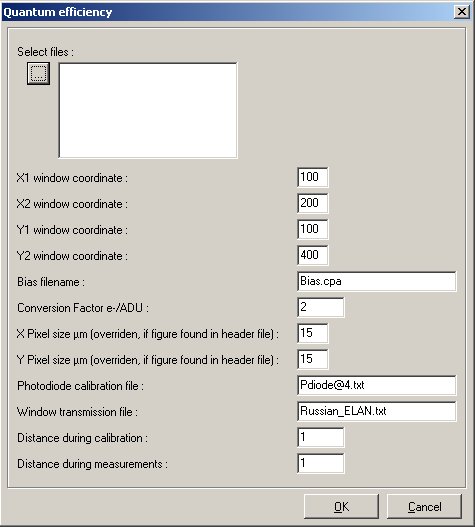
Conversion factor must have been measured
previously (see method 1 or 2).
Distance during calibration/measurements allows the reference
photodiode not to be at the same distance as the CCD, and to apply
a 1/d^2 correction. This correct for few centimeters effects.
Results :
This is the console output results, for each FITS files, it yields
to :
Wavelength in nm ; Flux in Amps ; Exposure in sec ; Count
values in e-
Filename
Wavelength Flux
Exposure Mean Stddev.Rms Median
Mean-Median
QE0002.fits
320 1.749E-10
180 21400
484.08 21400
-0.051972
QE0034.fits
340 4.754E-10
180 60662
1281.8 60678
-15.768
QE0004.fits
360 1.0234E-9
79.523 60965
1260.3 60976
-11.264
QE0032.fits
380 2.0072E-9
36.67 60579
832.35 60568
10.537
Qe0006.fits
400 3.5871E-9
20.472 60341
578.48 60342
-1.3613
QE0030.fits
450 8.4612E-9
9.223 60576
473.26 60582
-6.0853
QE0008.fits
500 1.1307E-8
7.248 60050
462.21 60052
-2.3795
QE0028.fits
550 1.3328E-8
6.904 64220
478.24 64226
-5.6408
QE0010.fits
600 1.4012E-8
6.438 59948
446.82 59952
-4.0484
QE0026.fits
650 1.3279E-8
7.296 59910
442.79 59914
-4.2144
QE0012.fits
700 1.1196E-8
9.48 59680
450.23 59686
-5.5382
QE0024.fits
750 8.4697E-9
14.39 59830
481.27 59838
-8.0172
QE0014.fits
800 5.4537E-9
27.831 59990
533.66 60004
-13.601
QE0022.fits
850 5.9775E-9
33.177 59951
508.76 59960
-9.061
QE0016.fits
900 5.1913E-9
58.056 59327
941.36 59162
165.3
Qe0020.fits
950 1.2662E-8
49.111 61606
2471.5 62156
-549.94
QE0018.fits
1000 1.0568E-8
171.99 62739
3667.6 64178
-1438.6
QE0036.fits
1100 1.7114E-9
180 1006
82.472 994
12.022
Image #1 Bandwith :5
PhotoDiode calibration Bandwith :4
Filename
Wav. PRNU%
QE% FDio/FDio.cal
Ph/pix/sec e-/pix/sec %Wind
QE0002.fits 320
2.262 61.065
0.83684
207.12 118.89
94
QE0034.fits 340
2.1125 69.312
0.87389
501.4
337.1 97
QE0004.fits 360
2.0669 73.139
0.91787
1069.8 766.77
98
QE0032.fits 380
1.3742 85.51
0.94499
1971
1651.7 98
Qe0006.fits 400
0.95867 93.401
0.98385
3187.7 2947.5
99
QE0030.fits 450
0.7812 95.421
1.0656
6953.3 6568.6
99
QE0008.fits 500
0.76969 94.847
1.1078
8823.7 8285.3
99
QE0028.fits 550
0.74462 91.842
1.1589
10170
9302.7 99.6
QE0010.fits 600
0.7453 88.622
1.1935
10661
9312.2 98.56
QE0026.fits 650
0.73904 86.151
1.2239
9913.7 8211.9
96.15
QE0012.fits 700
0.75434 78.263
1.2496
8687.5
6296 92.6
QE0024.fits 750
0.8043 69.666
1.2698
6714.2 4158.3
88.9
QE0014.fits 800
0.88938 56.584
1.2911
4473.7
2156 85.17
QE0022.fits 850
0.8485 44.878
1.3225
4939.4 1807.3
81.53
QE0016.fits 900
1.5912 30.209
1.3411
4284.7 1019.1
78.73
QE0020.fits 950
3.9762 14.732
1.4724
11264
1265.6 76.27
QE0018.fits 1000
5.7147 5.0888
1.3814
9821.7 373.16
74.66
QE0036.fits 1100
8.297 0.10033
1.3982
7613.2 5.5222
72.3
Le logiciel renvoie une courbe de rendement quantique (rendement de rêve...) :
et aussi une courbe d'uniformité de réponse photonique :
Voici quelques images à différentes longueurs d'ondes d'une MEME zone (bande passante de 5nm et CCD EEV44 aminci ) : à 320 nm (uniformite dégradée par l'implentation P+ d'un CCD apres son amincissement) :
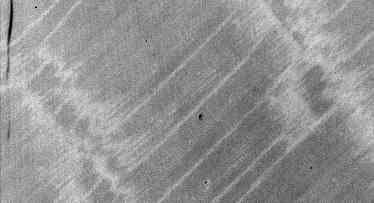
à 650 nm (très bonne uniformité) :
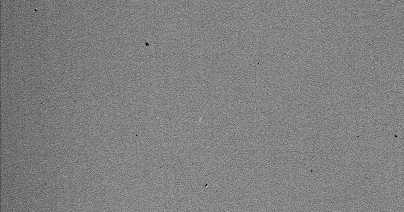
à 950 nm (belles franges ? non ) :
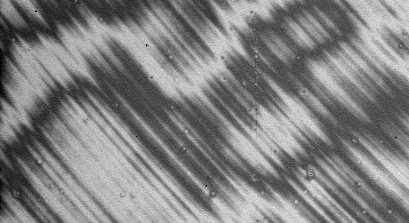
Methods used :
The method employed here for QE is straightforward and based on the
ratio between the amount of photon falling to the CCD surface for a
given wavelength and the effective amount of photoelectrons read
out at the output of the CCD. This is achieved by all the data
coming from the calibration text files and figures found in the
image file header, such as pixel size, exposure time, flux,
wavelength, etc etc ...
The PRNU computes the histogram of the selected (X1,X2,Y1,Y2) area,
and provide two figures : the intensities at 5% and 95% percentile.
Let's call those figures Int1 and Int2, the PRNU is
(Int2-Int1)/(Int1+Int2)*100%
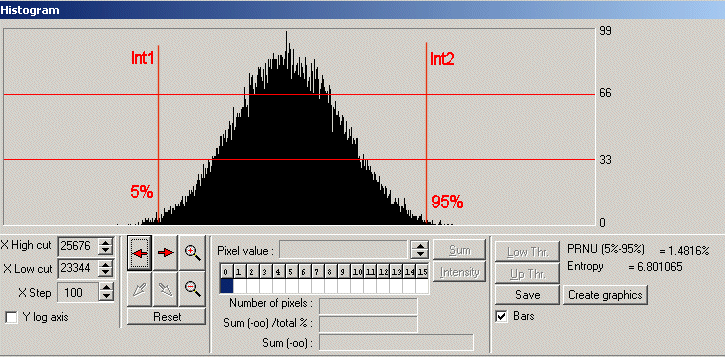
Focntion script associée :
![]() GetQE
GetQE
Images de test :
![]() Images de test
Images de test
Conditions d'activation du menu :
![]() Aucune
Aucune